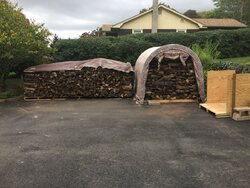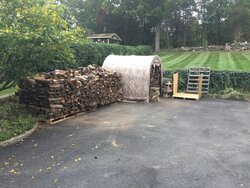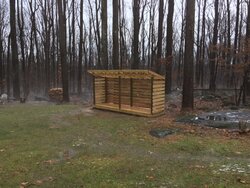I just moved into a house and plan on replacing the pellet stove, likely with a BK Ashford 30. It's on 12 acres of wooded land, and there is quite a bit of downed timber to be had. I have already collected a variety and have it c/s/s in a wood shed. Most everything I split had a MC of about 35% on average, including white and red oak, birch, and tulip poplar. I stacked the white oak at the bottom/back of the shed and tried to fill the front/tops in with the birch and poplar. I plan on having the stove by next winter.
Would it be unwise to burn the oak after 1 year in a cat stove? Splits are 16-18" and most are about 3-5" in diameter. What is a typical MC of green, freshly cut oak?
Would it be unwise to burn the oak after 1 year in a cat stove? Splits are 16-18" and most are about 3-5" in diameter. What is a typical MC of green, freshly cut oak?





